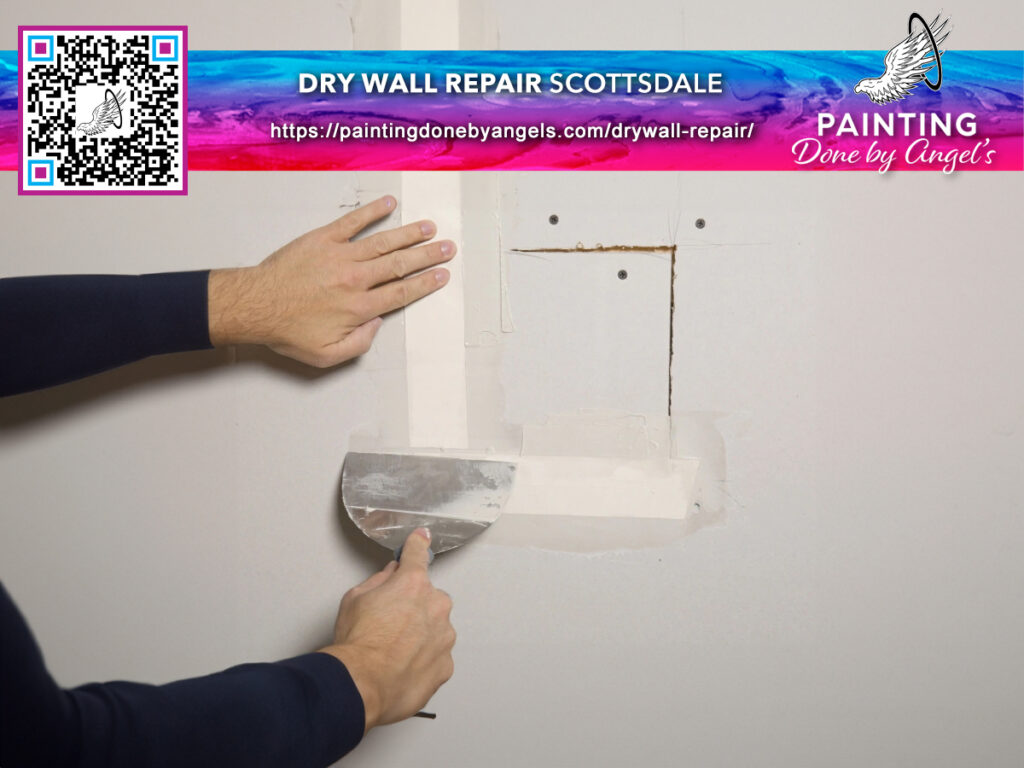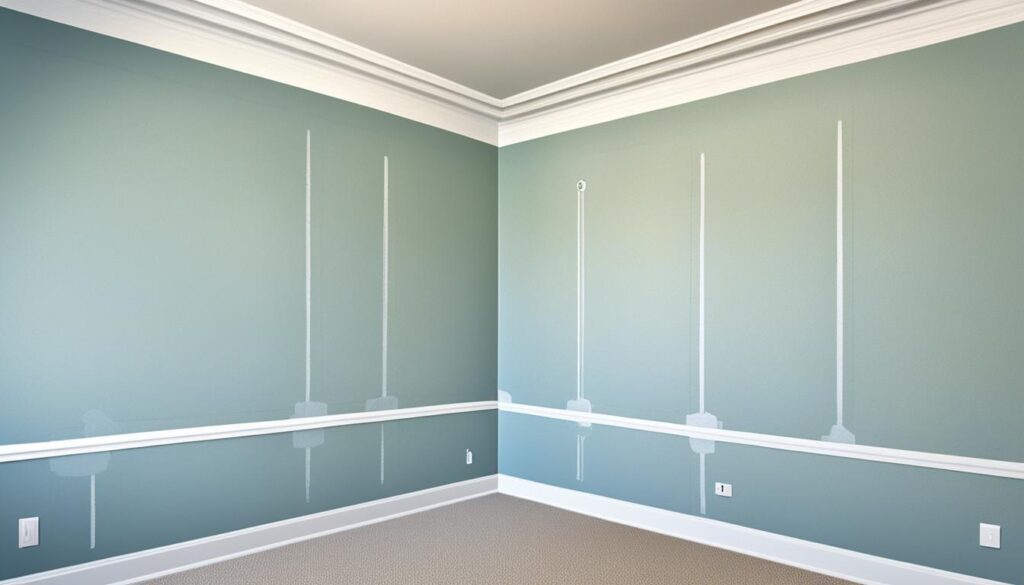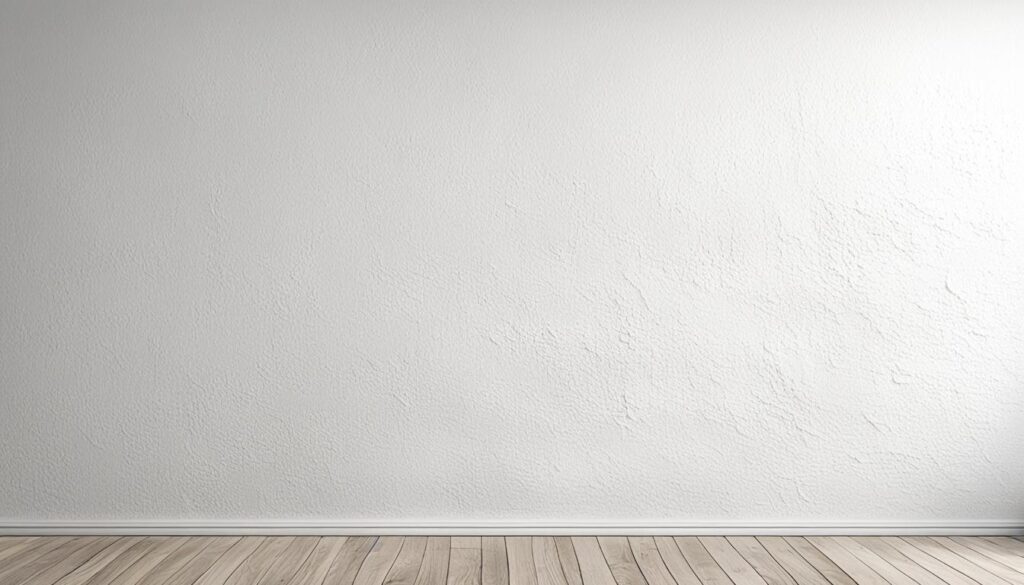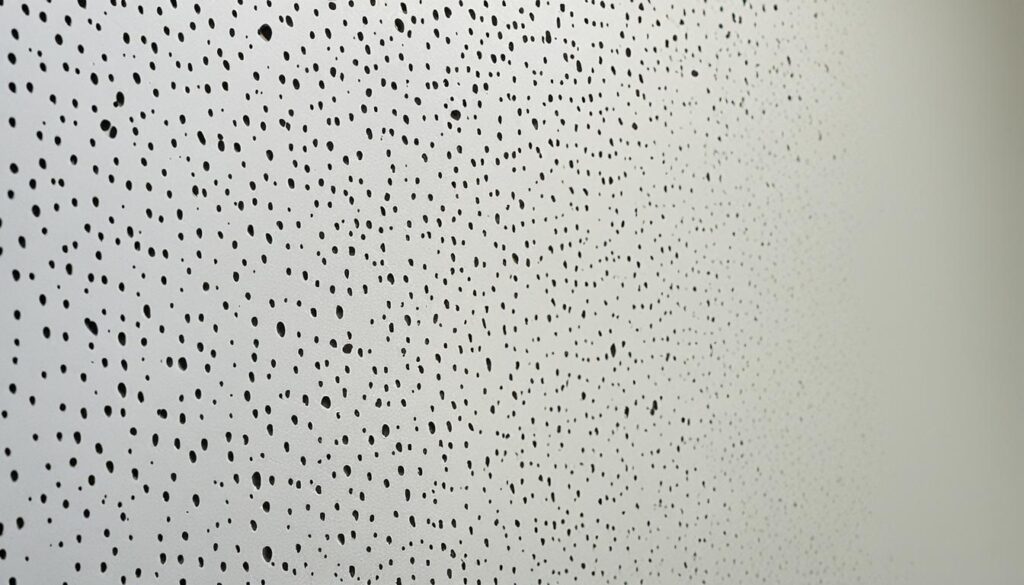
Drywall is a versatile material for building walls and ceilings. It comes in many types like mold-resistant or VOC-absorbing. These types differ based on what’s mixed with the gypsum. The paper, thickness, and the mix of chemicals make each type unique. Choosing the right drywall is key. You’ll want to match the type with what your walls or ceilings need.
Key Takeaways:
- Drywall comes in various types, including mold-resistant, plasterboard, and VOC-absorbing.
- The type of drywall you choose depends on the specific requirements of your project.
- Mold-resistant drywall is ideal for areas prone to moisture and mold growth, such as bathrooms and kitchens.
- Fire-resistant drywall provides enhanced protection against fire and is commonly used in garages and basements.
- Soundproof drywall is designed to reduce sound transmission between walls and ceilings.

Knowing the various drywall types is key for your building or renovation work. Each drywall type has its own benefits. For example, you might need mold-resistant drywall for wet places. Or maybe, you’ll choose fire-resistant drywall for safety in garages and basements. Soundproof drywall is great for keeping noise down. The right drywall improves how well your walls and ceilings perform and last.
This detailed guide will walk you through the many drywall types. We’ll help you pick the best one for your project.
Understanding Regular Drywall
Regular drywall, also called whiteboard, is very commonly used for walls and ceilings. It’s a popular choice because it’s budget-friendly and does a good job. It works well for different projects inside buildings. This is why many people choose it.
It usually comes in an ½ inch thickness, which is just right for most jobs. You can buy it in 4′ x 8′ sheets, which are easy to move and put up. Different sizes are available too, to fit your specific needs.
The best thing about regular drywall is how simple it is to work with. It cuts easily and goes up without a lot of fuss. This makes it a top pick for both pros and people who like to do it themselves. Plus, it gives you a smooth surface ready for paint, wallpaper, or texture.
Because it’s affordable and works for many tasks, regular drywall is perfect for homes. It’s known for being high-quality, easy to install, and versatile. Whether you’re fixing up a space or building from scratch, regular drywall is dependable. It helps you achieve great results without breaking the bank.
| Advantages of Regular Drywall |
|---|
| Cost-effective |
| Easy to work with |
| Provides a smooth surface for finishing |
| Available in standard sizes |
| Suitable for most interior applications |

Why Choose Regular Drywall?
Regular drywall, or whiteboard, is a smart choice for your home. It’s budget-friendly, easy to install, and perfect for many different jobs. If you’re working on a remodel or a new build, regular drywall is reliable. It offers the flexibility and quality you’re looking for.
Exploring Mold-Resistant Drywall
Mold-resistant drywall, known as green board, is made for damp places that may grow mold. It doesn’t have a paper backing like regular drywall. Also, it has a coating that stops mold from developing in wet or humid spots.
It’s perfect for rooms with lots of moisture like bathrooms, kitchens, and laundry areas. Plus, it serves well as a base for tiles where being moisture-proof is key.
Some types of mold-resistant drywall have fiberglass in them. This makes them even stronger against dampness, adding to their life.
Mold-resistant and moisture-resistant drywalls aren’t the same. The mold version is better at stopping mold than the moisture one. The moisture type is more for handling damp air but doesn’t block mold as well.
Before putting in mold-resistant drywall, talking to an expert is smart. They can help pick the right kind and make sure it’s put in correctly. Using this drywall helps in keeping damp spots mold-free.
Understanding Fire-Resistant Drywall
Fire-resistant drywall is key for fire safety at home or in a workspace. It offers extra protection against fire. There are two main types: Type X and Type C. Both are designed for different needs.
Type X Fire-Resistant Drywall
Type X drywall is great where fire safety is crucial. It can delay fire for up to an hour. This gives people more time to leave safely. The drywall is thick, offering a strong shield against heat and flames. It’s also possible to use more than one layer for increased protection.
Type C Fire-Resistant Drywall
Type C drywall doesn’t shrink under fire. It provides a level hour of protection, ensuring a building’s occupants are safe. It’s mainly for ceilings. Using Type C helps keep ceilings strong in a fire.
People often use fire-resistant drywall in places like garages and basements. These are areas where fire safety matters a lot. This type of drywall gives peace of mind, protecting the building from major fire damage.
Enhanced Sound Control
Fire-resistant drywall doesn’t just help against fire. It’s also great for reducing noise. This makes it perfect for bedrooms or recording studios. Its design and thickness cut down on sound, making spaces quieter and more comfortable.
When you’re looking at using fire-resistant drywall, talk to a pro. They’ll know the best type and how to install it well. This ensures your space is both safe and performs as needed.

Next, let’s explore another type of drywall made for reducing sound – soundproof drywall.
Exploring Soundproof Drywall
Soundproof drywall cuts down on noise in homes and businesses. It’s made to stop sounds from moving through walls and ceilings. Compared to regular drywall, it does a much better job.
This drywall comes in different thicknesses, from ½ inch to 5/8 inch. It has two layers of gypsum glued with special adhesive. This setup absorbs and stops sound from passing between rooms.
Installing soundproof drywall makes any space quieter. It’s great for places like bedrooms, home theaters, and offices. These are areas where you want less noise.
For the best soundproofing, use soundproof drywall and add fiberglass insulation. This duo is great at blocking both airborne and impact noises.
Soundproof drywall is as easy to work with as normal drywall. You can cut it and install it like you’re used to. This makes it a good choice for building or renovating.
Altogether, soundproof drywall is a powerful tool for cutting out noise. It’s a must-have for places that need quiet. This article is a gem – take the time to read it.
Considering Specialized Drywall Options
Regular drywall is common in building projects. But, there are also special types to meet specific needs. VOC-absorbing drywall is one such option. It’s designed to catch harmful chemicals in the air. Even after painting, it keeps the indoor air clean.
Fire-resistant drywall is another type. It’s great for garages and basements. This drywall slows fire and makes less smoke. It adds extra safety for you and your family.
Moisture-resistant drywall is perfect for damp areas. It has a special layer to stop mold. Choosing it keeps your walls strong and your home healthy.
To pick the best drywall, think about your project’s needs. There’s drywall for better air, fire safety, and wet areas. Each type is designed for certain conditions. This way, you get the best fit for your project.
Painting Done by Angel’s helps people who have lived in the Scottsdale & Phoenix, Arizona regions to make their homes and businesses more beautiful. We are dedicated to providing high-quality exterior and interior painting services. We have 15+ years of expertise in this area. We are a family-owned & operated company that is fully insured, bonded, and licensed so that your investment is safe with us; We strive to provide the best outcomes for our customers every time!
FAQ
What are the different types of drywall and when should I use each?
Drywall comes in many types. There’s regular drywall for everyday use. For damp places, there’s mold-resistant drywall. Fire-resistant drywall keeps you safer from fires. To lower noise, use soundproof drywall. For special needs, try VOC-absorbing or moisture-resistant drywall. Choose based on your project’s needs.
What is regular drywall?
Regular drywall is the common whiteboard. It’s perfect for most indoor projects. It balances cost and quality well. Working with regular drywall is smooth and easy. It offers a great finishing surface.
What is mold-resistant drywall?
Mold-resistant drywall, or green board, fights moisture and mold. With no paper backside and special coating, it stays mold-free in wet places. Use it in bathrooms, kitchens, and near tiles.
What is fire-resistant drywall?
Fire-resistant drywall gives more protection against fires. Type X offers one hour of fire safety. It’s good for layered fireproofing. Type C has the same fire safety but doesn’t shrink in fire. It’s for places that need extra fire protection, like garages.
What is soundproof drywall?
Soundproof drywall cuts down on noise between rooms. It’s thicker than regular drywall. Two layers of gypsum are joined by a noise-reducing glue. Use it in rooms where you want less noise.
Are there any specialized drywall options available?
There are unique drywall types. VOC-absorbing drywall makes harmful chemicals inert. Special fire-resistant drywall slows down the fire and smokes less. Moisture-resistant drywall is for wet places, with special backing to stop mold.


